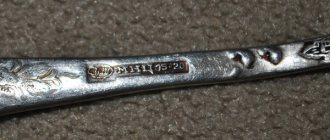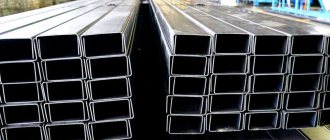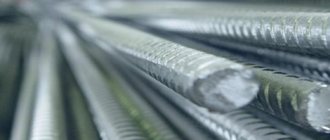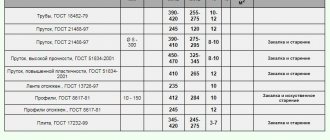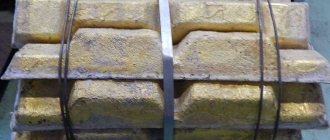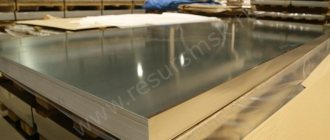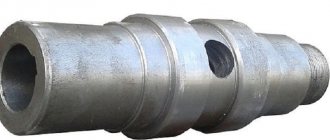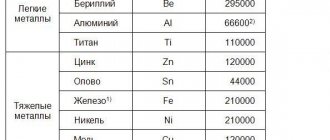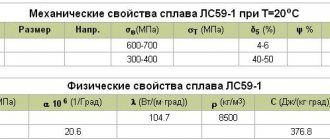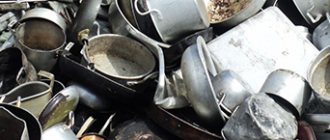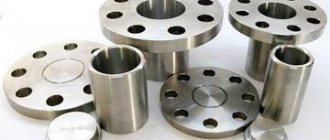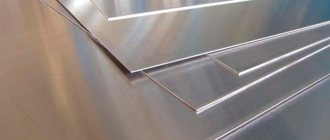Under the D16AT brand, sheets or plates of D16 duralumin are manufactured. The condition of the delivery material of the D16AT sheet metal is solid – after hardening and aging. Plating is normal.
D16AT grade sheets have the best structural properties among other types of rolled aluminum alloys. In a hardened and naturally aged state, the sheets have the greatest strength up to 80 ˚C, but since at higher temperatures the mechanical properties of products made from D16At decrease, in such cases they are rolled from this alloy after hardening and artificial aging, which, although negative affects the strength of the material, but prevents further degradation of qualities within a range of about 120 ˚C.
Chemical and electrical properties of D16AT (D16T)
The chemical composition of the alloy from which D16AT sheets are made is equivalent to D16T according to GOST 4784-97. D16 is a heat-strengthening alloy that can be refined before or after manufacturing the part. As for the mechanical properties of the material, after hardening and natural aging, the material increases its strength and hardness by more than two times, as can be seen from the table above. Thermal conductivity and electrical conductivity after hardening and aging drop by about 1.5 times.
D16ch grade aluminum alloy sheets
Alloy grade D16ch (duralumin type) belongs to the Al-Cu-Mg system, has a good combination of characteristics of fracture toughness, endurance during MCC, and fatigue crack growth rate. The D16ch alloy is close to the D16 alloy in terms of strength, ductility and endurance, but has a higher fracture toughness. Scope of application: Main power elements of the airframe
Basic information about the product
Alloy grade D16ch (duralumin type) belongs to the Al-Cu-Mg system, has a good combination of characteristics of fracture toughness, endurance during MCC, and fatigue crack growth rate. The D16ch alloy is close to the D16 alloy in terms of strength, ductility and endurance, but has a higher fracture toughness.
Specifications
Mechanical properties of sheathing sheets with a thickness of St. 1.9 to 6.0 mm from alloy grade D16ch in a hardened and naturally aged state (T) according to OST 1 90070-92 (sample cutting direction is transverse (P)): Tensile strength (σv) - no less than 425 MPa Yield strength (σ0.2) - not less than 275 MPa Relative elongation (δ) - not less than 11.0%
Technical consultation
Regulations
| Document type: | Designation: | Name: |
| Technical conditions (TU) | TU 1-92-52-77 | Sheathing sheets made of aluminum alloys grades D16ch and V95pch with thin regulated cladding |
| Technical conditions (TU) | Change No. 1 to TU 1-92-52-77 | Change No. 1 to TU 1-92-52-77 |
| Technical conditions (TU) | Change No. 2 to TU 1-92-52-77 | Change No. 2 to TU 1-92-52-77 |
| Technical conditions (TU) | Change No. 3 to TU 1-92-52-77 | Change No. 3 to TU 1-92-52-77 |
| Technical conditions (TU) | Change No. 4 to TU 1-92-52-77 | Change No. 4 to TU 1-92-52-77 |
Plating
Sheets D16AT are covered with a normal cladding of technical aluminum AD1, with a thickness of 2-4% of the thickness of the rolled product. Plating is applied to protect the material from corrosion, to which the alloy is prone under normal conditions, and at high temperatures it is also prone to the formation of intergranular corrosion. The advantage of using D16AT is that it no longer needs to be thermally treated, therefore the plating will not be damaged during processing, which reduces the cost of the final product, except in cases where more reliable protection against corrosion in the form of paint coating or anodizing may be needed.
What is the difference between alloys D16, D16T and D16B in plate markings
All of the listed grades are one alloy of duralumin D16, containing, according to GOST 4784-97, in addition to aluminum, 3.8-4.9% Cu; 1.2-1.8% Mg; 0.3-0.9% Mn. The difference is in the processing of the alloy. In particular, the marking “D16 plate” indicates only the composition of the alloy. D16T slab – incorrect marking, because index “T” corresponds to the heat-treated state (hardening + natural aging), and the slabs are supplied without heat treatment.
The indices “A” and “B” indicate the presence of cladding, normal and technological, respectively. Those. The marking “D16B plate” corresponds to duralumin with technological cladding.
Types of rolled products D16AT - material properties
Only three types of rolled metal are produced with the D16AT marking, not counting sheets after hardening and artificial aging (T1).
Under this brand are produced:
- Sheets D16AT according to GOST 21631 (after hardening and natural aging, or after aging and cold hardening);
- D16AT slabs after hardening and natural aging according to GOST 17232-99.
Considering the tendency of the material to corrosion, all sheets, without exception, are produced with normal AD1pl cladding.
Alloys
For domestic aluminum alloys, alphanumeric and numeric designation systems are used. There is no system laid down in the alphanumeric marking (although these alloys were later assigned a digital marking, but it did not “take root”). The letters can symbolize aluminum and the main alloying component - AMts (Al-Mn), AMg1 (Al-Mg), the purpose of the alloy ( AK6, AK4-1 - forging aluminum), the name of the alloy ( AV - avial, D16 - duralumin), can be associated with the name of the institute that developed the alloy ( VAD1, VAD23 - VIAM - All-Russian Institute of Aviation Materials, wrought aluminum), etc. The numbers after the letters do not reflect the chemical composition.
At the end of the sixties, four-digit digital marking was introduced. The first number indicates the base of the aluminum alloy. Aluminum and alloys based on it are marked with the number “1”. The second digit indicates the main alloying component or main alloying components. The second number “0” denotes various grades of aluminum, sintered aluminum alloys (SAS), various grades of aluminum foam. The number “1” denotes alloys based on the Al-Cu-Mg system; number “2” - alloys based on the Al-Cu system; number “3” - alloys based on the Al-Mg-Si system; number “4” - alloys based on the Al-Li system, as well as alloys alloyed with poorly soluble components, for example, transition metals (manganese, chromium, zirconium); alloys marked with the number “5” are based on the Al-Mg system and are called magnalium; alloys based on the Al-Zn-Mg or Al-Zn-Mg-Cu systems are designated by the number “9”. Numbers 6, 7 and 8 are reserved.
In the Russian Federation, GOST 4784 “Aluminum and wrought aluminum alloys. Marks." provides marking of alloys in three ways: both in alphanumeric form and only in digital form, as well as taking into account the requirements of the international standard (international marking) ISO 209-1 (ISO 209-1 Wrought aluminum and aluminum alloys -Chemical composition and forms of products -Part 1: Chemical composition). At the same time, the digital marking according to GOST does not coincide with the international marking of aluminum alloys.
Digital marking of wrought aluminum alloys
| Brand | Group of alloys, main alloying system |
| 1000-1018 | Technical aluminum |
| 1019, 1029, etc. | Powder alloys |
| 1020-1025 | Foamed aluminum |
| 1100-1190 | Al-Cu-Mg, Al-Cu-Mg-Fe-Ni |
| 1200-1290 | Al-Cu-Mn, Al-Cu-Li-Mn-Cd |
| 1300-1390 | Al-Mg-Si, Al-Mg-Si-Cu |
| 1319, 1329, etc. | Al-Si, SAS powder alloys |
| 1400-1419 | Al-Mn, Al-Be-Mg |
| 1420-1490 | Al-Li |
| 1500-1590 | Al-Mg |
| 1900-1990 | Al-Zn-Mg, Al-Zn-Mg-Cu |
Show table
The last two digits in the digital designation of an aluminum alloy are its serial number. The last digit carries additional information: alloys ending in an odd number are wrought, alloys ending in an even number are casting, 7 is a wire alloy, 9 is a metal-ceramic alloy. If the alloy is experimental and is not used in mass production, then the number “0” (01570, 01970) is placed in front of the mark and the marking becomes five-digit.
To indicate the condition of deformed semi-finished products made from aluminum alloys, an alphanumeric designation system is used after the alloy grade. Without designation means without heat treatment.
P - semi-finished product (alloys for cold stamping from wire);
M - soft annealed;
N - hard-worked;
H3 - three-quarters hard-worked;
H2 - hard-worked to one half;
H1 - one-quarter hard-worked;
T - hardened and naturally aged;
T1 - hardened and artificially aged for maximum strength;
T2, T3 - artificial aging modes that ensure overaging of the material (softening artificial aging modes);
T5 - hardening of semi-finished products from the end temperature of hot pressure treatment and subsequent artificial aging to maximum strength;
T7 - hardening, enhanced tensile straightening (1.5-3%) and artificial aging for maximum strength;
A – normal cladding;
B - sheets without cladding or with technological cladding;
U - thickened cladding (8% per side);
B - increased quality of rolling out hardened and aged sheets;
O - increased quality of rolling out annealed sheets;
GK - hot-rolled sheets, slabs;
TPP - hardened and aged profiles of increased strength (for D16).
At the end of the brand there may be letters characterizing the features of this alloy:
“ch” – clean;
“pch” – increased purity;
“och” – special purity;
“l” – casting alloys;
“s” – selective.
How D16AT sheets are used
D16AT sheets are used as a structural material and cladding in the aircraft industry. They have excellent structural strength, lightness, strength and high hardness. D16AT is the most common structural alloy, supplied in the form of rolled sheets.
D16AT or D16T slabs are also used in the aviation industry, along with the automotive industry and mechanical engineering.
D16AT has better structural strength than the more mechanically strong V95T alloy and is not prone to stress corrosion. It exhibits its properties perfectly at temperatures ranging from -230 to 120 ˚C.
Panels pressed from aluminum alloy grade D16ch
Alloy grade D16ch (duralumin type) belongs to the Al-Cu-Mg system, has a good combination of characteristics of fracture toughness, endurance during MCC, and fatigue crack growth rate. The D16ch alloy is close to the D16 alloy in terms of strength, ductility and endurance, but has a higher fracture toughness. Scope of application: Structural elements of aeronautical products subject to tension
Basic information about the product
Alloy grade D16ch (duralumin type) belongs to the Al-Cu-Mg system, has a good combination of characteristics of fracture toughness, endurance during MCC, and fatigue crack growth rate. The D16ch alloy is close to the D16 alloy in terms of strength, ductility and endurance, but has a higher fracture toughness.
Specifications
Mechanical properties of panels made of D16ch alloy in a hardened and naturally aged state (T) according to OST 1 90177-75 (sample cutting direction is transverse (P)): Tensile strength (σv) - no less than 432 MPa Yield strength (σ0.2) — not less than 314 MPa Relative elongation (δ) — not less than 8%
What is cladding of aluminum plates
Depending on the customer’s requirements, a duralumin plate can be purchased with different manufacturing methods. In accordance with the requirements of GOST 17232-99, slabs can be clad or unclad. Cladding (cladding) – welding of a coating onto the surface of a slab during hot plastic deformation. Technically pure AD1pl grade aluminum with an impurity content of no more than 0.7% is used as a cladding layer. Normal and technological cladding is used for slabs. Normal (thickness 2-4% of the sheet thickness) serves to increase the corrosion resistance of D16 type duralumin. Pure aluminum forms a thin protective film of oxide, which reliably protects the sheet from corrosion.
The purpose of technological cladding (1.5% of thickness) is to improve manufacturability during hot rolling with large reductions. Technological cladding practically does not increase corrosion resistance.
When cladding, the indices “A” – normal and “B” – technological cladding are added to the marking.
